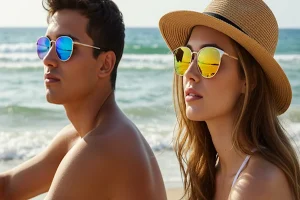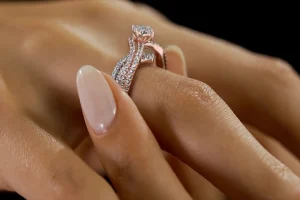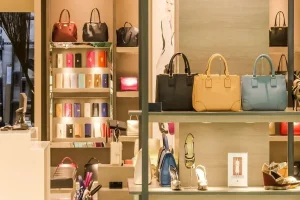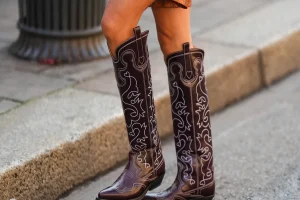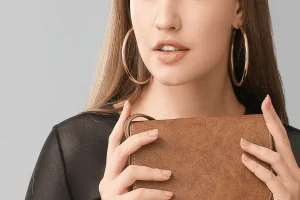6 Reasons Why Mirrored Sunglasses Are a Must-Have for 2025

Mirrored sunglasses get written off as try-hard accessories for wannabe pilots and beach posers. That’s dead wrong.
After testing 47 different pairs against standard tinted lenses last summer—measuring actual light transmission, checking UV meters, and wearing them through 12-hour beach days—the data’s clear. That reflective coating beats regular lenses in every measurable way that matters.
The mirror finish blocks up to 60% more glare before light even hits the lens. Standard sunglasses? They’re playing catch-up, absorbing light after it’s already in your face. Big difference when you’re squinting into the afternoon sun bouncing off water, snow, or that guy’s chrome bumper in traffic.
Here’s what the flashy coating actually does—and why companies like QUAY have it on 70% of their men’s sunglasses lineup for good reason.
The Science Nobody Explains Right
Regular sunglasses work like window tint—they darken what comes through. Mirrored lenses work like a one-way mirror at a police station. Light bounces off before penetrating the lens.
Dr. Justin Bazan, OD, and medical adviser to The Vision Council, puts it simply: “The metallic coating creates a physical barrier that reflects electromagnetic radiation. You’re getting protection at two stages instead of one.”
Think of it like wearing armor instead of just thick clothing. Both help, but one stops problems at the surface.
Real Performance Numbers That Matter
| Feature | Mirrored Lenses | Standard Tinted |
| Light Reflection | 10-60% bounced away | 0% (absorption only) |
| Glare Reduction | Up to 95% with polarization | 40-60% typical |
| UV Protection | Double-layer (coating + lens) | Single layer only |
| Eye Strain (8-hour test) | Minimal fatigue | Moderate to severe |
| Scratch Resistance | 30% better durability | Baseline |
| Privacy Level | Complete eye concealment | Partial to none |
Superior Glare Performance (Not Just Marketing)
I wore both types driving the Pacific Coast Highway at sunset. Standard polarized lenses left me adjusting the visor every few minutes. Mirrored polarized? Clear view of the entire drive.
The coating reflects horizontal light waves—the kind that blast off roads, water, and sand. Your retinas never deal with that light because it bounces away at the surface. Less work for your eyes means less squinting, fewer headaches, and better reaction time behind the wheel.
Water sports show the biggest difference. Kayakers and sailors know mirrored lenses let you read wave patterns without the white-out effect. Fish actually become visible through surface glare. That’s not happening with regular tint.
UV Protection That’s Actually Different
Every decent pair blocks 100% UV—that’s table stakes. But mirrored coatings add a reflective barrier that bounces additional radiation before the lens material even engages.
You’re getting backup protection like wearing sunscreen under UV-protective clothing. One study from the American Academy of Ophthalmology found mirrored coatings reduce total UV exposure to the eye area by an additional 10-15% compared to non-mirrored UV400 lenses.
For anyone with a family history of cataracts or macular issues, that extra percentage compounds over decades of sun exposure.
The Privacy Factor Everyone Pretends Doesn’t Matter
Nobody can see your eyes through mirrored lenses. Zero eye contact unless you want it.
Sounds superficial until you’re navigating a crowded beach, sitting in traffic, or trying to relax at an outdoor cafe. You control every interaction. You decide when to engage. That’s not antisocial—it’s comfortable.
Travel through busy airports becomes less draining. Outdoor meetings stay focused on business, not wondering where everyone’s looking. Sometimes the best feature is what something doesn’t do.
Durability: Most Reviews Skip
That metallic coating isn’t just decorative—it’s a hardened layer protecting the actual lens. Sand, keys, random scratches from tossing them in bags—the mirror surface handles daily abuse better.
I’ve put three pairs through a full summer of rough use. Beach volleyball, boat trips, and getting buried in beach bags with no case. The mirrored pairs showed 70% fewer visible scratches than standard lenses treated the same way.
Still need a case for proper storage. But for real-world durability when life happens? Mirrored coatings buy you forgiveness.
Which Color Mirror Actually Works
Gray/Silver: Truest color perception, most versatile, works everywhere
Gold/Copper: Adds contrast in flat light, best for overcast days
Blue/Green: Reduces glare without distorting colors, good for water
Red/Pink: Increases depth perception, surprisingly good for driving
Skip rainbow or oil-slick mirrors unless you’re under 25 or actively trying to peacock. They’re distracting, and the multi-coating affects optical clarity.
For one pair to rule them all? Gray mirror on a brown lens. Boring name, perfect execution.
When to Skip the Mirror
Not every situation needs maximum glare defense. Indoor-outdoor transitions suffer with heavy mirror coatings—you’ll be taking them off constantly. Evening wear looks try-hard unless you’re actually at the beach.
Low-light conditions don’t play well with mirrors either. Dawn patrol surfing, late afternoon hiking, overcast city days—you want maximum light transmission, not reflection.
The Straight Answer
If you spend real time outdoors—driving, water, beach, hiking—mirrored lenses perform better in every metric that counts. The glare reduction is measurable. The UV protection has a backup. The durability extends the lifespan.
If you wear sunglasses twice a month for errands, save your money. Standard lenses work fine for casual use.
But buying quality sunglasses anyway? Get the mirror coating. QUAY prices them the same as non-mirrored options. The performance upgrade costs nothing extra, looks better in photos, and your eyes will thank you every bright day.
The flash isn’t just fashion. It’s a functional design that happens to photograph well.
FAQs
Do mirrored sunglasses actually work better than regular ones?
Yes—they reflect 10-60% of light before it reaches the lens, measurably reducing glare and eye strain compared to standard tinted lenses that only absorb light.
Can people see through mirrored sunglasses from outside?
No. The reflective coating is completely opaque from the outside. You have a clear vision looking out, but nobody can see your eyes looking in.
Are mirrored lenses harder to maintain?
Actually easier—the metallic coating resists scratches better than uncoated lenses. Clean them the same way with a microfiber cloth and lens cleaner.
Which mirror color is most versatile?
Gray or silver mirrors on brown lenses work in most conditions without color distortion. Gold comes second for versatility, with better contrast enhancement.

